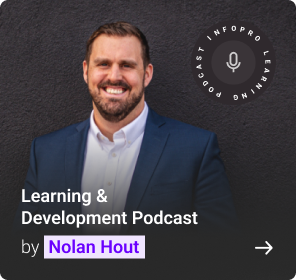Talent acquisition is a continuous strategic process of identifying, attracting, hiring, and retaining individuals with the essential skills to meet an organization’s needs. It’s more than filling open positions; it’s a systems approach to talent management—understanding organizational needs and cultivating relationships with passive candidates. Organizations that build a proactive talent acquisition strategy are more desirable employers and stand out. The whole idea of this process is to create a talent-attractive culture, drive long-term business success and ensure sustainability. Here’s how it can be achieved.
1. Build a Strong Employer Brand
Building a strong brand requires establishing a strong value proposition, a compelling careers page, and impactful employee success stories. Organizations should also use social media, offer competitive pay and benefits, encourage employee advocacy, promote diversity and inclusion, create a positive experience for candidates during the hiring process, emphasize a healthy work-life balance, participate in industry events, monitor online reviews, measure branding impact, and constantly seek to improve through feedback.
2. Evaluate Current and Future Needs
Assessing the immediate and future talent requirements is a key factor in a business operating effectively. This focuses on understanding talent needs and aligning workforce planning to ensure business continuity and future growth. This involves differentiating talent needs – short/long-term – identifying critical roles that shape the organization’s future and creating detailed candidate profiles based on skills and qualifications. Assess internal talent to recognize employees who can be upskilled or reallocated to enhance retention efforts and ensure succession planning.
3. Use Targeted Sourcing
Organizations need to leverage multiple sourcing channels to secure an effective reach within a diverse talent pool. This includes having a careers page on the company website, posting jobs with job boards, and working with specialist recruitment agencies. Incentivizing employee referral programs, attending industry-specific recruiting events and career fairs, and leveraging associations and employee alumni networks are additional effective strategies. Hiring managers can expand the pool by leveraging online communities, talent marketplaces, and direct outreach via emails and calls.
4. Develop a Strong Screening Process
A systematic and thorough screening process ensures that candidates’ skills, qualifications, and capabilities match the requirements. This process involves initial candidate screening by reviewing resumes and cover letters to ensure qualifications and relevant experience, conducting phone interviews for initial screening of communication skills, and facilitating skills assessments to test technical and job-specific skills. These interviews also help examine how a candidate could handle situations in the workplace based on their past experiences.
Furthermore, a good cultural fit test ensures the candidates align with the company’s values and preferred work environment. Skills and work history must be verified by checking references; background checks must be run to confirm experience and credibility and assess soft skills like communication, teamwork, adaptability, attention span, etc.
5. Leverage Data and Analytics
Organizations can harness data-driven insights to make better hiring decisions, expedite recruitment processes, and improve hiring quality. In talent acquisition specifically, it is used for talent demand forecasting through analysis of historical data and market trends to develop a candidate pipeline proactively, sourcing channel performance (job boards, social media, agencies), and candidate journey evaluation to identify and address inefficiencies. Another way to assess recruitment effectiveness is to track metrics such as application completion rates, time-to-hire, cost-per-hire, and quality of hire.
Simultaneously, data-driven tools objectively evaluate candidates’ skills, competencies, and cultural fit. Tracking how the employer brand is perceived online and calculating diversity and inclusion data allows monitoring of how being inclusive makes sense. Furthermore, ROI analysis assesses the cost-benefit of talent acquisition strategies, and predictive analytics helps identify which candidates are most likely to succeed, how long they’ll stay, and how talent management strategies can be optimized.
6. Build A Talent Pipeline
Building a strong talent pipeline is crucial to a talent acquisition strategy. It is a proactive strategy to cultivate relationships with potential candidates who might (re)enter the murky waters of the job market at some point. Hence, it saves time-to-hire because it uses a pre-qualified candidate pool, making it act and shortening the onboarding.
Furthermore, it aids in strategic succession planning by grooming internal resources for leadership roles, decreases recruitment costs due to reduced dependency on external sourcing channels, and enhances the quality of candidates, as the visibility of skills and cultural fit is better. In addition to this, having a talent pipeline is beneficial in many ways, such as reinforcing employer branding through a commitment to invest in talent, becoming more agile when responding to immediate needs, ensuring long-term relationships regardless of the outcome of the selection process, and guaranteeing a good candidate experience.
7. Enhance the Candidate’s Experience
Candidates who undergo a smooth, clear-cut, fast hiring process are more likely to charge positively for a brand even though they aren’t hired. Reducing uncertainty throughout the process improves the candidate experience. Include specific and transparent job descriptions detailing role responsibilities, qualifications, expectations, and company culture.
Ask relevant questions, schedule respectful interviews, personalize interactions with candidates, and provide constructive feedback that focuses on strengths and areas for improvement. Standardize employer branding within messaging, offer responsive and easily accessible support for queries, and foster appreciation through follow-up, closure on application progress, and an invitation for future communications. Finally, feedback in satisfaction surveys should be taken to spot where the hiring process needs to improve.
8. Employ Useful Technologies
Technology plays a vital role in talent acquisition by streamlining processes, improving candidate experience, and facilitating data-driven decisions. In addition to the tools such as Applicant Tracking Systems (ATS) to accelerate recruitment and application management, tracking processes, and communication; AI-powered sourcing and screening that analyze resumes/ CVs to assess fit and conduct screenings using professionally relevant criteria; video/interviewing platforms help save time while evaluating candidates based on their communication.
Furthermore, employee referral software streamlines the referral recruiting process, and virtual events and career fairs reach candidates and showcase the employer brand online. Data analytics and reporting tools, mobile recruitment apps, and candidate relationship management (CRM) systems enable organizations to analyze data to optimize hiring strategies, provide on-the-go access, manage candidate databases, nurture relationships, and personalize engagement.
9. Foster Diversity and Inclusion
A diverse and inclusive workplace widens your talent network and promotes creativity. Highlight diversity initiatives in job postings, careers pages and social media. By analyzing hiring and retention data to understand where the gaps are, screening processes with tools to ensure you are not biased, and having a culture that supports everyone in the company, hiring managers can be sure that they are not missing anyone or passing anyone up for an opportunity based on unconscious bias. Furthermore, it will attract a broader range of potential candidates by prioritizing diversity as an employer brand.
10. Measure and Optimize the Talent Acquisition Strategy
The most successful talent acquisition strategy is about continuous improvement. Monitoring metrics, such as the percentage of candidates who complete the application process, the percentage of new hires referred by current employees, and the quality of hire, can help hiring managers evaluate their efforts. They must also continuously measure and test new processes and market dynamics to ensure their delivery model remains agile and connected to an organization’s targeted business outcomes.
Conclusion
A strong talent acquisition strategy is crucial for a business’s success; it helps companies source and retain top talent. The strategy includes the importance of the employer brand, talent needs assessment, diverse sourcing channels, robust screening process, data and technology usage, building a talent pipeline, candidate experience, diversity and inclusion, and constant improvements—each step to attract the best candidates. It is a wide-ranging approach that meets immediate hiring demands and cultivates long-term growth and competitiveness.
We at Infopro Learning augment this process by combining human expertise and AI through a Skills-based Organization (SBO) approach with flexible staffing solutions to build a high-performing, adaptable workforce. To learn more, connect with our talent acquisition experts today!





